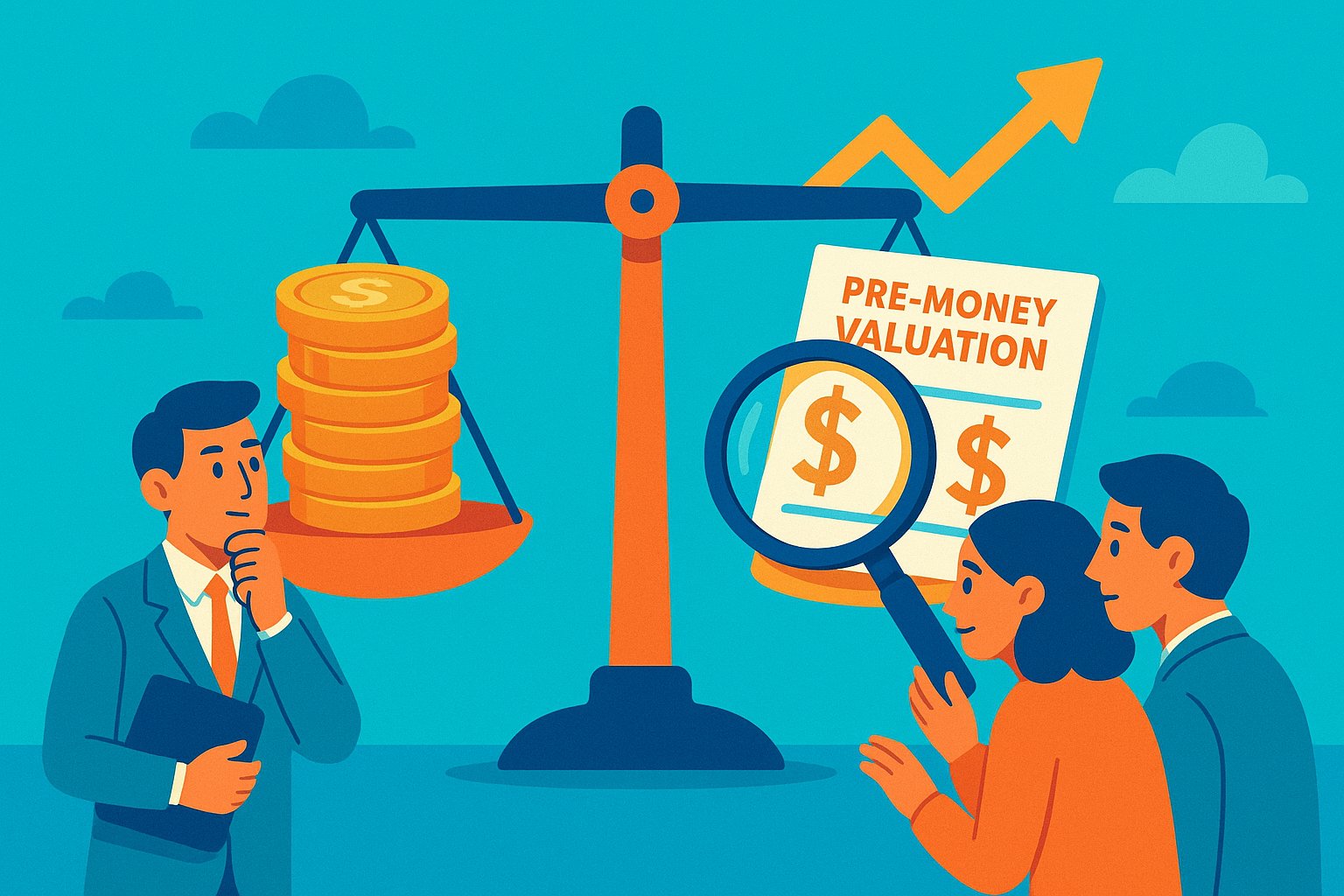Embracing a New Era of Startup Financing
In the lightning-fast world of early-stage investing, speed and simplicity often trump complexity. Enter the SAFE note—Simple Agreement for Future Equity—a financing instrument that has revolutionized how startups raise capital and how investors secure stakes in fledgling ventures. Born from the need to streamline fundraising and reduce legal friction, SAFEs have quickly become a staple in accelerator programs, angel rounds, and increasingly, equity crowdfunding campaigns. Unlike traditional equity issuances or convertible debt, a SAFE dispenses with interest rates, maturity dates, and convoluted repayment schedules, instead promising investors equity at a future financing event under agreed-upon terms. But beneath this elegant simplicity lie nuances that directly impact your potential returns, ownership percentage, and liquidity path. In this comprehensive guide, we’ll journey through the origins of SAFEs, unpack their core mechanics, examine how they convert into shares, explore the benefits and pitfalls for both founders and backers, and illuminate best practices for navigating this dynamic financial instrument. By mastering the SAFE note, you’ll be equipped to participate in early-stage deals with confidence, clarity, and the strategic insight to optimize your investment outcomes.
Understanding the SAFE Note: A Fresh Take on Early-Stage Deals
At its core, a SAFE note is a contractual promise by a startup to grant equity to an investor at a later date, typically triggered by the company’s next priced financing round. Unlike traditional convertible notes, SAFEs do not accrue interest and carry no maturity date—eliminating pressure on founders to repay or renegotiate terms if follow-on funding stalls. Instead, the SAFE sits quietly on the cap table until a qualifying event—often defined as a priced equity round, acquisition, or initial public offering—initiates conversion. At conversion, the SAFE’s principal investment translates into preferred shares at a price per share determined by either a valuation cap, a discount to the new round’s price, or a combination of both. This structure balances the investor’s desire for early upside with the startup’s need for unencumbered runway, making SAFEs particularly attractive in high-growth, high-uncertainty environments where negotiating valuation upfront can be challenging.
The Birth of SAFEs: Simplifying Fundraising for Accelerators
The SAFE note traces its roots to 2013, when the renowned Silicon Valley accelerator Y Combinator introduced the instrument to address pain points in seed-stage deals. In traditional early financings, founders and investors wrestled over valuation, document complexity, and legal fees—often consuming precious time and resources better spent on product development. Y Combinator’s SAFE template swept aside these hurdles, offering a one-page agreement with standardized terms that most parties could accept without extensive negotiation. This innovation democratized seed financing by reducing legal costs, shortening deal timelines, and fostering uniformity across rounds. Accelerators, in particular, embraced SAFEs as a matter of course, providing participating startups with a ready-made document that backers could execute swiftly, ensuring founders could capitalize on momentum and maintain focus on growth.
How a SAFE Note Works: From Investment to Conversion
When you invest via a SAFE, you transfer capital to the startup under the promise of future equity. The SAFE document specifies key terms—most notably the valuation cap and/or discount rate—that determine your conversion price. Suppose you invest $50,000 under a SAFE with a valuation cap of $5 million and a 20 percent discount. When the company raises its next priced round at $10 per share, two potential conversion calculations emerge. The cap implies a price per share of $5 million divided by the post-money share count, while the discount offers shares at 80 percent of the new round price—$8 per share. The SAFE typically converts at whichever method yields a lower price, maximizing your ownership stake. This mechanism rewards early risk-taking by granting a share of upside while aligning incentives between founders and investors as the company grows.
Key Provisions: Valuation Caps, Discounts, and Most-Favored-Nation Clauses
SAFE notes hinge on several foundational provisions that warrant careful scrutiny. The valuation cap sets an upper bound on the company’s implied pre-money valuation for your conversion calculation, serving as a ceiling to protect your ownership percentage if the company’s valuation skyrockets. The discount rate rewards your early entry by allowing you to purchase shares at a reduced price relative to new investors in the triggering round. Some SAFEs also include most-favored-nation (MFN) clauses, which permit you to adopt more favorable terms if subsequent SAFE investors negotiate lower caps or higher discounts before conversion. While these features enhance investor upside, they can layer complexity onto the cap table—underscoring the importance of modeling multiple scenarios to forecast your prospective equity stake and potential dilution.
Why Founders Favor SAFEs: Speed, Cost, and Simplicity
For startup teams racing against time and capital burn, SAFEs present compelling advantages. By eliminating interest accrual and maturity deadlines, SAFEs reduce the risk of default or contentious renegotiation when growth slows. Their standardized templates—readily available from organizations like Y Combinator—slash legal fees and compress negotiation cycles to days rather than weeks. This agility enables founders to secure funding quickly, deploying resources toward product development, hiring, and market expansion without wrestling over valuation details in the earliest stages. Moreover, SAFEs allow companies to postpone difficult valuation discussions until they can demonstrate traction or revenue, ensuring that equity pricing reflects performance rather than speculative projections. For many entrepreneurs, these benefits translate into a cleaner cap table and a sharper focus on building value.
Investor Benefits and Considerations: Balancing Upside and Risk
From the investor’s perspective, SAFEs offer a straightforward path to equity with built-in upside features, but they also carry important considerations. The absence of a maturity date and repayment obligation means that if a startup never reaches a qualifying financing event, your capital can remain indefinitely unconverted, lacking the safety net of debt-like claims. This open-ended timeline demands a tolerance for illiquidity and patient capital. Furthermore, without interest accrual, your real return depends entirely on the triggering round’s terms, making cap and discount provisions vital for protecting against missed valuation inflection points. To optimize returns, investors should seek clear definitions of triggering events, negotiate robust valuation caps, and consider MFN clauses where possible. Thorough due diligence on the startup’s runway, business model, and fundraising prospects also helps mitigate the risk that your SAFE funds remain unconverted.
Comparing SAFEs to Convertible Notes: Nuances and Trade-Offs
While both SAFEs and convertible notes bridge the gap to priced rounds, they embody distinct philosophies. Convertible notes function as debt, featuring interest rates and maturity dates that compel repayment or renegotiation if the next financing stalls. This debt stigma can deter founders worried about looming obligations, but it offers investors additional security via seniority in repayment and a guaranteed floor value. SAFEs, conversely, remove debt dynamics entirely—granting founders breathing room but leaving investors reliant on triggering events for equity realization. Convertible notes may also include warrants or require explicit shareholder rights, whereas SAFEs are simpler instruments devoid of such appendages. Your choice between the two hinges on your risk tolerance: if you prioritize downside protection and a potential liquidation event, convertible notes may suit you better; if you favor streamlined documentation and founder alignment, SAFEs could be the superior vehicle.
Modeling Conversion Scenarios: Forecasting Your Ownership Stake
Effective SAFE note investing demands rigorous scenario modeling. Begin by mapping out potential post-money valuations in upcoming funding rounds, factoring in projected company milestones and market sentiment. Apply your SAFE’s valuation cap and discount rate to calculate conversion prices under each scenario, then derive your implied ownership percentage by dividing your investment by the product of conversion price and post-money share count. Also model dilution pathways if the company plans multiple rounds before exit—anticipating how option pool expansions, new SAFE issuances, or bridging rounds could erode your stake. Spreadsheet tools tailored to cap table management can streamline these projections, enabling you to visualize alternative outcomes and set criteria for participating in follow-on rounds or demanding anti-dilution protections. With clear modeling, you transform the SAFE’s abstract terms into concrete expectations.
Navigating Crowdfunding Platforms: SAFEs in the Retail Investor Arena
Equity crowdfunding portals have embraced SAFEs to accommodate early-stage issuers and retail backers. In this context, platforms often standardize SAFE templates, ensuring non-accredited investors face comparable terms to institutional participants. Crowdfunding sites display valuation caps, minimum investment thresholds, and conversion mechanics alongside pitch materials, providing transparency to help backers compare offerings. However, heightened regulatory scrutiny means additional disclosures—crowdfunding issuers must file offering statements with securities regulators detailing risk factors, use-of-proceeds plans, and historical funding information. Retail investors should leverage these disclosures, interrogate the startup’s projections, and verify that SAFEs include clear conversion event definitions. As crowdfunding democratizes access to early-stage deals, understanding how SAFEs function within these regulated environments is crucial for safeguarding both capital and expectations.
Legal and Tax Considerations: Beyond the Cap Table
SAFE notes, though simpler than traditional instruments, carry legal and tax implications. Jurisdictions may treat SAFEs as equity or debt for tax purposes, affecting how gains are recognized and whether your investment qualifies for favorable capital gains treatment. Some countries impose withholding taxes on conversions or exit proceeds, while others allow participation exemptions for qualified startups. Legal drafting should address jurisdiction-specific regulations, transfer restrictions, and investor rights upon dissolution or liquidation. Investors may benefit from engaging legal counsel to review SAFE templates—ensuring provisions like assignment clauses, governing law, and dispute-resolution mechanisms align with their protections. Careful attention to these legal and tax contours reduces the likelihood of adverse surprises when conversion events or exits materialize.
Best Practices: Maximizing Value in SAFE Investments
To harness SAFEs effectively, cultivate a disciplined investment playbook. Prioritize startups with credible roadmaps toward priced rounds—seasoned founding teams and clear capital requirements signal higher conversion probabilities. Negotiate valuation caps that reflect both market comparables and the startup’s traction level—avoiding caps so high that your upside diminishes. Consider including MFN clauses when possible, protecting against down-round or follow-on dilution. Maintain open dialogue with founders—tracking milestones, spending pace, and funding progress helps you anticipate triggering events. Prepare to participate in subsequent fundraising to exercise pro rata rights, preserving your ownership percentage. Finally, integrate scenario modeling into your decision-making: compare SAFE terms across deals to identify the most attractive risk-reward profiles, and align your SAFE portfolio allocation with your broader early-stage investment strategy.
The Future of SAFEs: Evolving Instruments in Startup Ecosystems
As startup ecosystems mature, SAFE notes continue to evolve. New variants incorporate rolling valuation caps tied to revenue milestones, dynamic discount rates linked to performance metrics, and even tokenized SAFEs on blockchain networks that automate conversion through smart contracts. Some jurisdictions are exploring SAFE-like instruments tailored to local legal frameworks, broadening adoption across Europe, Asia, and Latin America. Platforms are also enhancing investor dashboards to visualize SAFE conversion scenarios in real time, integrating with cap table management software. These innovations aim to preserve the SAFE’s core ethos—simplicity and alignment—while embedding greater flexibility and transparency. For investors and founders alike, staying attuned to these developments ensures you remain at the forefront of efficient, equitable early-stage financing.
Integrating SAFEs into Your Investment Arsenal
The SAFE note stands as a confirmation to financial ingenuity—bridging the gap between founder speed and investor protection in the dynamic realm of startup financing. By eliminating debt features, simplifying documentation, and embedding features like valuation caps and discounts, SAFEs offer a potent alchemy of flexibility and upside potential. Yet, like any powerful tool, they demand understanding: the absence of maturity dates, the mechanics of conversion, the interplay of key terms, and the legal and tax considerations that accompany them. Armed with robust modeling practices, diligent due diligence, and strategic negotiation tactics, you can integrate SAFEs into your investment portfolio with precision and purpose. As SAFEs continue to gain traction in accelerators, angel networks, and crowdfunding platforms, mastering this instrument positions you to seize the opportunities and navigate the uncertainties of early-stage ventures—transforming simple agreements into rewarding equity stakes in tomorrow’s breakout companies.




